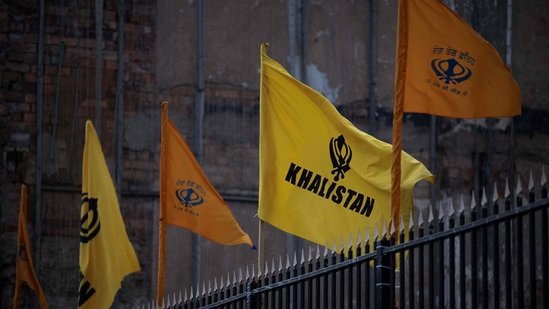Ethereum’s native token could bounce back after a challenging year.
Ether (ETH 0.46%), the native cryptocurrency of the Ethereum blockchain, lost more than 30% of its value over the past 12 months. Its first spot-price ETFs were approved last July, but those funds didn’t attract as much attention as Bitcoin‘s (BTC 0.06%) earlier ETFs.
Instead, Ether seemed to be held back by concerns about competition from newer and faster blockchains, its slowing network activity, and the Trump Administration’s unpredictable tariffs. Nevertheless, some investors remain fiercely bullish on Ether’s future. One of those bulls is ARK Invest’s Cathie Wood, who believes Ether’s price could reach $166,000 by 2032.
That would represent a gain of nearly 6,220% and boost its market cap to more than $20 trillion. Bitcoin, which Wood is also bullish on, currently has a market cap of $2 trillion. Could Ether skyrocket to those levels, or should investors maintain more realistic expectations?

Image source: Getty Images.
The differences between Ether and Bitcoin
Ethereum originally ran on a proof-of-work (PoW) mechanism like Bitcoin. This meant it needed to be mined by GPUs or other chips.
But in 2022, Ethereum transitioned to the proof-of-stake (PoS) mechanism, which was roughly 99% more power efficient than the PoW mechanism. So instead of being mined, Ether is now staked (or locked up for rewards) on the Ethereum blockchain.
Ethereum’s transformation into a PoS blockchain also enabled it to support smart contracts, which are used to develop decentralized apps (dApps), non-fungible tokens (NFTs), and other crypto assets. Bitcoin’s PoW blockchain doesn’t support smart contracts.
Therefore, Ether’s value is often linked to Ethereum’s popularity as a development platform. Bitcoin is still valued by its scarcity and limited supply — since 19.6 million of its maximum supply of 21 million tokens have already been mined.
Ether doesn’t have a fixed maximum supply, but its overall supply declines when its network activity rises. That’s because a portion of every transaction fee in Ether is burned. But when Ethereum’s network activity slows down, its supply rises as more Ether tokens are created than burned.
So while Bitcoin is always deflationary, Ether can be both inflationary and deflationary. But to remain a popular platform for developers and investors, it needs to keep providing fast transaction times with low fees.
That’s becoming increasingly difficult as faster and cheaper PoS blockchains like Solana and Cardano challenge Ethereum. Solana processes transactions much faster than Ethereum, while Cardano usually offers lower fees.
Ethereum’s catalysts and challenges
Ether’s next big upgrade — The Verge — aims to upgrade its security features and lower its hardware requirements so it can run on smaller devices like smartphones, wearables, and Internet of Things (IoT) devices. It also aims to reduce its off-chain Layer 2 (L2) fees with a series of upgrades for its network to clear more space for fresh data. Those upgrades could help it indirectly reduce its congestion issues by absorbing some of its core Layer 1 (L1) network traffic.
Assuming those upgrades bring in more developers and investors, its network activity will increase, reduce its supply, and stabilize Ether’s price. Another potential catalyst would be the approval of new spot-price ETFs with staking features.
The first batch of Ether’s spot-price ETFs only held Ether in cold storage and didn’t pass on any of its interest-like staking rewards. The next batch could pass on those rewards (about 3% to 5% annually) and make them more appealing.
However, Ether could still be held back by competition from other PoS blockchains, a lack of approvals for new ETFs with staking rewards, or the messy macro environment that is curbing the market’s appetite for cryptocurrencies and other speculative investments.
Should you believe Cathie Wood’s bullish outlook?
Wood believes Ether’s value will rise as Ethereum becomes a foundational layer of a new digital financial ecosystem that challenges traditional banks with decentralized finance (DeFi) apps, NFTs, and tokenized versions of real-world assets.
She also expects Ether’s staking yield to become more appealing than the yields of U.S. Treasuries as interest rates decline, and for the approvals of new staking ETFs to bring in even more institutional investors. Just as with Bitcoin, Wood expects the growing institutional adoption of Ether over the next few years to drive its price a lot higher.
That thesis sounds reasonable, but claiming it could reach a $20 trillion market cap within the next seven years — compared to gold’s current market cap of $3.4 trillion — seems too bullish.
So while it might be smart to accumulate Ether as it rolls out new networking upgrades, attracts more developers, burns more tokens, and gains more attention with new ETFs, we should take Cathie Wood’s forecasts with a grain of salt. It will probably stabilize and rise higher, but its long-term value isn’t that easy to gauge.






